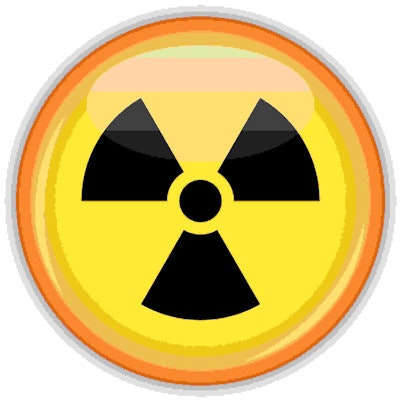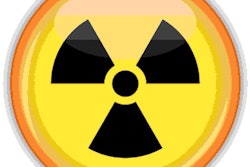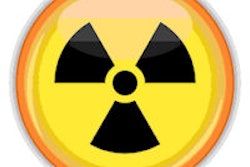
Are radiologic technologists (RTs) who assist with interventional studies at higher risk of death from brain cancer? Maybe, but it's not clear that radiation exposure is the reason why, according to a new study published March 28 in the American Journal of Roentgenology.
Researchers from a variety of institutions studied brain cancer death rates in a group of 110,000 radiologic technologists who participated in a longitudinal survey starting in 1981. While RTs who were involved in fluoroscopy had slightly higher brain cancer death rates than those who weren't, the researchers found no relationship between the amount of radiation they were exposed to on the job and their risk of brain cancer death.
This led Cari Kitahara, PhD, of the U.S. National Cancer Institute, and colleagues to conclude that there may be other factors behind why interventional RTs have higher brain cancer rates. These could include exposure to developing chemicals used to process film or drugs and iodinated contrast agents used during fluoroscopy-guided procedures (AJR, March 28, 2017).
On-the-job exposure
A number of studies in recent years have examined the link between radiation exposure and cancer death rates in radiologic technologists, particularly interventional procedures due to their higher radiation levels compared to static studies. Researchers have focused on brain cancer mortality because interventional technologists wear lead shielding that protects other parts of the body from radiation, while the head is for the most part unprotected.
A March 2016 study by Rajaraman et al found that interventional technologists had a mortality risk from malignant intracranial neoplasms that was 2.5 times higher compared to RTs who never assisted with fluoroscopy procedures. The current study used the same cohort as the Rajaraman study, but it was designed to assess whether there was a relationship between brain cancer mortality rates and the amount of radiation technologists were exposed to during their work histories.
Kitahara and colleagues analyzed data from the U.S. Radiologic Technologists Study, which began in the 1980s with a cohort of 146,022 technologists who were working in the field at the time, some having started their careers as early as 1926. The technologists received four surveys between 1983 and 2014 that asked various questions regarding work history and practices, medical history, and other issues.
Kitahara's group used data from technologists who responded to the first or second cohort surveys (or both); this consisted of 83,655 female and 26,642 male technologists. To be included in the study, estimates of annual and cumulative radiation doses to the brain must have been performed for the individuals.
Dose estimates were derived from badge measurements for 72% of the study cohort members between 1960 and 1997, as well as detailed work histories of procedures and protection practices from the first three cohort surveys. The researchers used historical data and dose estimates for the years before 1960 when dosimetry badges weren't yet available.
Kitahara and colleagues then tracked various demographic characteristics, lifestyle factors, and medical and work histories, including a history of working with fluoroscopy-guided imaging procedures. Finally, they tracked the number of cases of brain cancer that occurred in the subjects.
Over a median follow-up period of 26.7 years, 193 technologists who assisted with fluoroscopically guided procedures died of malignant brain tumors, the researchers found. Individuals in the group had a cumulative mean absorbed brain dose of 12 mGy.
Like Rajaraman et al, Kitahara's group found a higher relative risk of brain cancer mortality among technologists who assisted with fluoroscopy compared to those who didn't. But the relationship was not as strong: The new study found that those who were exposed to fluoroscopy procedures had a relative risk of brain cancer mortality of 1.7 compared to technologists who didn't do fluoroscopy. This compared to a risk of 2.5 in the Rajaraman research. (The Kitahara study followed technologists for an additional four years compared to the previous research.)
Their next question was whether the technologists who received a higher radiation dose experienced a higher rate of brain cancer mortality. The answer was no: Kitahara and colleagues found an excess relative risk for brain cancer mortality of 0.1 per 100 mGy of exposure, just slightly above the rating of 0 that would indicate no association.
"We found no evidence of a dose-response association between cumulative protracted occupational radiation and malignant intracranial tumor mortality," they wrote.
The researchers noted that the statistical power of their study may have been too limited to identify a positive relationship between radiation dose and mortality, given the relatively small number of cancer deaths and the low range of estimated radiation dose.
But they also postulated that the higher rate of brain tumor deaths found in both the Rajaraman and Kitahara studies could be due to factors other than radiation in the work environment of technologists who assist with interventional radiology
For example, technologists assisting with fluoroscopy-guided procedures continued to perform photographic subtraction angiography in darkrooms through the 1980s, whereas technologists working with static radiographs stopped working with open film tanks in the 1960s, they noted. Film-processing chemicals have been associated with a wide range of health maladies.
Fluoroscopy technologists are also exposed to a variety of drugs and iodinated contrast agents at a higher rate than other RTs, although the authors pointed out that a connection between such chemicals and brain tumor development has not yet been established.
In the end, Kitahara and colleagues noted that their findings are in line with other studies on exposure to low and moderate doses of radiation, which have not established a link between exposure levels and brain cancer mortality in adults.
They advised additional studies in the future, such as examining the association between protracted radiation exposure and benign brain tumor incidence in the same cohort.



















